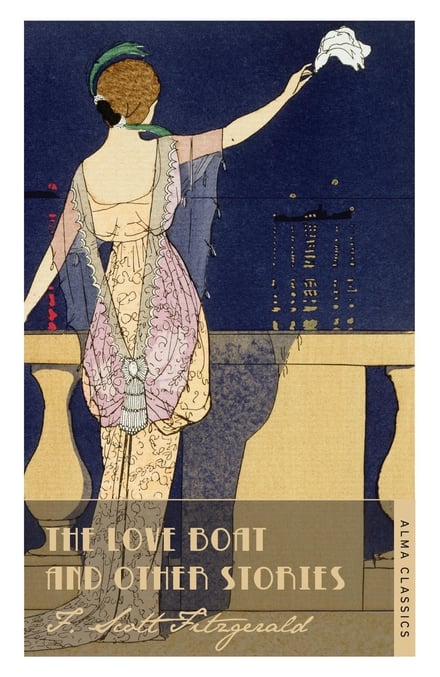F Scott Fitzgerald wrote so much more than The Great Gatsby and his short stories have a bittersweet sense of 'felt life.' Alma Classics are currently republishing lots of Fitzgerald in impressive editions.
Alma Classics have recently published quite a deal of Scott Fitzgerald's works, his novels and short stories and included in the catalogue also are these lesser-known pieces gathered in The Love Boat and Other Stories which he wrote in the 1920s. The Intimate Strangers and Other Stories also gathers neglected gems from the 1930s, both presented in attractive livery, with gilt lettering, wrap-around covers featuring George Barbier’s fine cover artwork, and, as appendix, an engaging biography of the American writer (1896-1940) at the end of The Love Boat collection..
Reading Fitzgerald’s exquisite tales of loners and desperate individuals smitten by the American dream is like turning PG Wodehouse’s bright wardrobe around and seeing something dishevelled and torn, something that is no longer escapism, something all too real. It’s that lonely, conflicted note you hear around the same time in Eugene O'Neill and Ernest Hemingway, and later on in Arthur Miller. Indeed you hear Fitzgerald it seems somehow in the tone of Richard Ford and Tobias Wolff.
The Minnesota-born writer was all about bright-eyed expectations dashed, hollow dreams evaporated, hard-bitten choices and people trying to lead a quiet life after something turbulent or life-changing occurs. The opening story in The Love Boat collection is The Smilers, an entrancing gem of just eight pages, concerning the unhappy Sylvester Stockton who meets a number of people of his acquaintance on the streets of his New York quarter. These acquainatnces include a woman who rejected him years ago because of his lousy mood: “Then one day she told him that she would go mad if he ever parked his pessimism in her sun parlour.”

Sylvester seems just annoyingly, gratuitously miserable, but by the conclusion of the story, we are shown a secret aspect to the man’s character that utterly changes our perception. We have also seen the shabby, lives behind the Smilers of the title, but somehow it is Sylvester's epiphanic moment that endures.
In the brilliant title story, The Love Boat, three young men in a small boat, who have just come from the Harvard boat race, brazenly ask the high school revellers on The Love Boat of the title for a rope to be thrown. They want to hitch their boat to the steamer and blag their way into the party. One of the high school seniors, Mae Purley, becomes suddenly tired of her current “dream”, Al Fitzpatrick - who is standing beside her - when she spots Bill Frothington in the young men's launch.
The pair lock eyes. “They made love. For a moment they made love as nobody dares to do after. Their glance was closer than an embrace, more urgent than a call. There were no words for it.” Mae senses intuitively that something will come of this encounter . “ She knew that he would come straight to her. That was never the trouble – the trouble was in keeping up her own interest after she had satisfied the deep but casual curiosity of her lips.” Thus the story proceeds as though its events were ordained by fate.
Dogged for much of his life by alcoholism and financial problems, and a myriad of other insecurities, even in death there were complications in the story of F Scott Fitzgerald. Permission to bury the celebrated writer in St Mary’s Church in Rockvile, Maryland was refused because he was not a practising Catholic. Instead he was buried at Rockville Union Cemetery on December 27, 1940.
His wife Zelda spent much of her married life in various mental hospitals and she died in 1948. Eventually, both Zelda’s and F Scott’s remains were moved to the family plot in 1975, following a petition by their daughter Scottie Fitzgerald. His darkly profound genius lives on in brilliantly-crafted stories such as The Smilers and The Love Boat.
Paddy Kehoe

